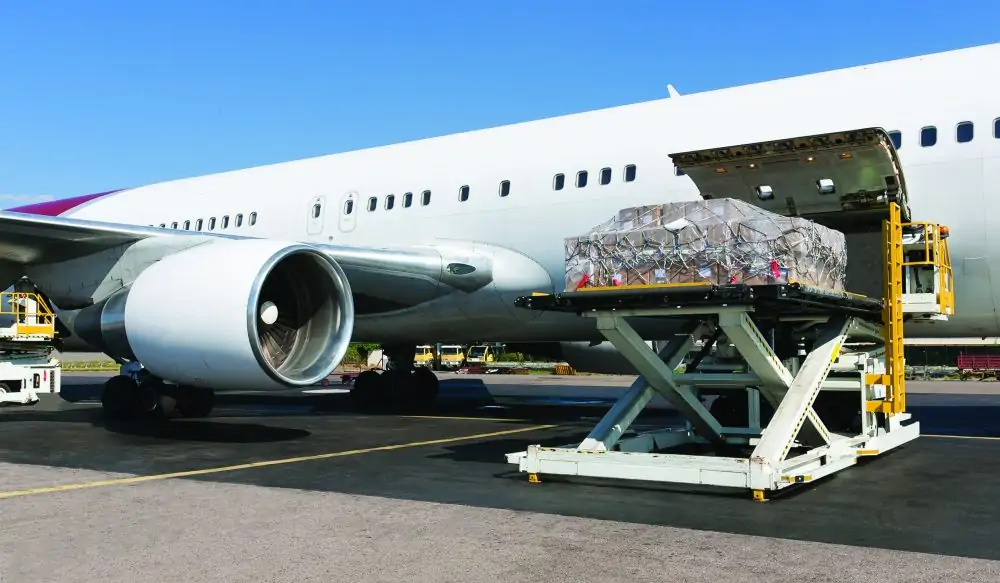
Shipping to Europe from the USA? Here’s What You’ll Need
Whether you’re shipping ten packages a week or a thousand, when it comes to international shipping, having the right customs documentation is key to smooth cross-border fulfillment.
Fulfillment to Europe from the USA involves navigating customs regulations – in fact, your package can’t legally – or efficiently – enter the European Union (EU) without the correct paperwork. That’s where international customs forms ‘CN22’ and ‘CN23’ come in.
Crucial for safe and secure shipping from the US to Europe, both forms are used by authorities to monitor which goods come in and out of their countries and to determine if any import duties must be paid.
Without them – or with inaccurate information – you risk your package being delayed, incurring unexpected charges – or even being rejected and destroyed by customs.
If you’re unsure which customs form to use, when to fill it out and how to do it correctly, this guide will cover everything you need to know for stress-free deliveries to your customers across the Atlantic.
When Should I Use a Customs Declaration Form?
From a small item of jewelry to someone in Italy to a bulk shipment of beauty products to a store in Spain – anytime you send something with a perceived commercial value internationally from the United States, that item will be subject to fees and taxes and you’ll need to complete an international customs form.
Customs forms are required for:
- Any package leaving the US
- All goods subject to customs clearance or import duties in the destination country
This applies both to personal shipments (gifts or personal belongings) and commercial shipments (products sold through an online store). While both types need customs documentation, commercial goods are often more closely scrutinized, often requiring additional forms such as invoices or certificates of origin.
Increasingly, EU and UK customs authorities recommend submitting your documentation digitally; the use of electronic customs declarations – through platforms such as FedEx, UPS, DHL or through integrated fulfillment systems – can significantly reduce the risk of manual errors or delays at the border. Digital submission also allows customs officials to pre-clear shipments before they even arrive, speeding up processing and improving the delivery experience for your customers.
What Are CN22 & CN23 Forms?
Recognized across global postal systems, CN22 and CN23 are two standard customs declaration forms used in international shipping, including for shipments from the United States into the UK and EU. Containing vital information about your shipment’s contents and value as well as their carrier and receiver, tariff codes and country of origin, they ensure frictionless cross-border clearance and avoid delays, fines or returns.
What is a CN22 Form?
The CN22 form is a simplified, ‘lite’ customs declaration, typically used for lower value shipments and is ideal for low-cost online orders and small, personal gifts.
- When to use it: For goods valued under €300 (or the equivalent in USD)
- What it includes: Sender and recipient details, description of the contents, weight, declared value and HS (Harmonized System) tariff codes
What is a CN23 Form?
The CN23 form is a more detailed customs declaration form, used for the international shipping of higher-value goods or regulated consignments.
- When to use it: For goods valued over €300 or those requiring additional documentation, like licenses or commercial invoices
- What it includes: the same information as on a CN22, as well as fields for the item’s origin country and currency, shipping costs and optional attachments, such as invoices, certificates or permits
You’ll often need to include a commercial invoice alongside the CN23, so customs can determine the correct duties and taxes owed.
How to Fill Out a CN22 & CN23 Form Correctly
Both customs declaration forms are typically attached directly to the outside of the package and since scanners are often used to read them automatically, completing these forms accurately is critical. Mistakes, including inaccurate descriptions of your parcel’s content, can lead to customs delays, fines or, at worse – rejected shipments.
Here’s a step-by-step guide to getting it right:
Filling Out a CN22 Form
- Sender & Recipient Info: Include full names, addresses and contact numbers.
- Description of Contents: Be specific. Instead of simply “Clothing”, write “Women’s cotton shirt”.
- Quantity & Weight: List each item and total weight.
- Declared Value: This must reflect the actual market value (not a discounted or estimated amount).
- HS Tariff Code: Look up the correct code using the Harmonized System* for your item.
- Signature & Date: Sign and date the form to certify that the information is accurate and true.
Filling Out a CN23 Form
Include all the above CN22 steps – and add:
- Detailed Item List: Include country or origin, item category and total number of units.
- Reason for Export: Is it a commercial sale, gift or return?
- Invoice Information: Attach a commercial invoice if needed.
- Additional Costs: Include shipping fees, insurance or discounts.
- Sign, date and attach the CN23 form to the parcel before handing it to the carrier.
*Within international shipping, HS (Harmonized System) codes are used by customs authorities globally to identify and categorize products, helping them to determine which duties and taxes apply and whether products are restricted or require special licenses.
It’s important to research and validate your HS codes carefully. Using the wrong code can impact classification, leading to incorrect duty charges, processing delays and non-compliance penalties or even the seizure of goods at the border.
Key Differences Between CN22 & CN23 Forms
Below is a simple comparison table to help you decide which international customs form to use when shipping to Europe:
| Feature | CN22 Form | CN23 Form |
|---|---|---|
| Value Threshold | Up to €300/ USD equivalent | Over €300/USD equivalent |
| Level of Detail Required | Basic – limited fields for item description and value | Comprehensive – includes origin, currency, shipping costs and supporting documents |
| Invoice Needed | Not always | Often required |
| Format | Sticker on package | Larger form in pouch or envelope |
| When It’s Used | Personal or low-value shipments such as gifts or small parcels | Commercial or higher-value shipments or goods requiring licenses or invoices |
| Delay Risk if Incorrect | Moderate: if undervalued, it may delay processing or trigger extra checks | High: incorrect or missing documentation can result in fines, extended delays or returned shipments |
Always check you’re using the right form. For instance, using a CN22 for high-value goods could result in underreporting, risking a potential delay at customs.
Special Considerations for Shipping to Europe from the USA
Customs rules will vary depending on your package’s destination and you must account for these regional specifics when shipping to Europe from the USA:
Customs Regulations Unique to the European Union (EU)
- All shipments are subject to VAT and duties, including gifts valued above a certain threshold
- The EU has strict electronic customs declaration requirements and digital pre-submission is highly recommended
- Depending on the goods you’re shipping, packaging and product labeling regulations may apply
Post-Brexit Shipping to the UK
- Since Brexit, shipping to the UK now follows different rules compared to the EU
- UK VAT may be charged at the point of sale or by customs, depending on how your business is set up
- Commercial shipments may need a GB EORI number and additional documentation
Items That May Require Additional Forms
Certain goods can’t be cleared through customs with a CN22 or CN23 form alone, they require extra documentation, licenses or regulatory approval and may be subject to excise duties. If you’re shipping any of the following from the USA to the EU or the UK, be prepared for stricter checks and additional paperwork:
- Alcohol and tobacco products
- Perishable or food items
- Restricted or controlled items such as chemicals, aerosols, cosmetics (eg. nail polish) and anything else classed as hazardous or prohibited under local laws
- Pharmaceuticals or medical goods
- Animals and plants
- Electronic products with lithium batteries
Having a clear understanding of what qualifies as a restricted product will save you from potential non-compliance penalties or frustrating delays. If you’re unsure, always check the destination country’s import restrictions before shipping.
Avoiding Common Mistakes in Customs Declarations
Using the correct customs forms is a legal requirement but even the most experienced shippers can make mistakes that risk impeding delivery, triggering unnecessary fines – or even leading to confiscated or destroyed shipments.
Here are some common mistakes to avoid:
1. Incorrect Value Declaration
Always declare the full market (retail) value of the item – even for gifts or promotional items. Under-declaring value to avoid taxes is illegal and easily spotted by customs.
2. Misclassification of Goods
Using the wrong HS code can result in incorrect duties being assessed or your package being held up for further inspection.
3. Missing Documentation
Especially important with CN23 shipments, failing to attach a proper commercial invoice or supporting documentation can alert customs officials as they need that information to process your shipment efficiently – so be sure to double-check what’s required.
Ensuring Smooth International Shipping
Efficient international shipping comes down to preparation. With a proper understanding of customs processes and the right documentation, you can be sure your parcels will reach their European destination smoothly and on time.
Don’t forget to:
- Use a customs form for all international shipments
- Choose between a CN22 form and a CN23 form based on the item value and complexity
- Consider submitting your customs declaration electronically, for faster processing and compliance
- Ensure forms are thoroughly and accurately completed, using legible block capital letters and the correct HS codes
- Always attach the required invoices and confirm the item values are correct
- Pay attention to the specific rules for the EU and the UK
Scale Into Europe With Confidence
Whether you’re a small e-commerce seller expanding into a new territory or an established brand shipping larger-scale overseas orders, partnering with a trusted third-party logistics provider (3PL), can transform the way you handle international shipping.
Acting as an extension of your business, an experienced 3PL will manage everything from accurate customs documentation and electronic declarations – to labeling and secure packaging.
When shipping to Europe, accuracy is key – especially post-Brexit, where different rules apply within the UK. Partnering with an experienced 3PL, like ILG, can simplify the process, ensuring compliance with ever-changing international regulations so that every shipment meets the requirements of its destination – leaving you to focus on customer experience as you expand your presence into new international markets.
Find out more about ILG’s UK and EU fulfillment or get in touch today.
Contact Us
Written by Sam Taylor
Performs a central role in developing our most longstanding relationships with customers and helping them grow and thrive. Sam is ILG’s customer service champion, upholds our highest standards of care and designs productive fulfilment strategies that can adapt easily in step with fast-moving customer needs. A typical day sees him working hand in hand with customers and our internal teams to find practical solutions to continuously improve performance.
More insights >
7 E-Commerce Logistics Pain Points Outsourced Fulfillment Solves
Struggling with e-commerce fulfillment? Discover how outsourced fulfillment solves 7 logistics pain points to reduce costs, scale faster and improve customer experience.
Five Steps To Switching Your Fulfillment Provider
For every business that relies on a fulfillment/3PL partner to get products into the hands of their customers, working with the right provider is a must.

